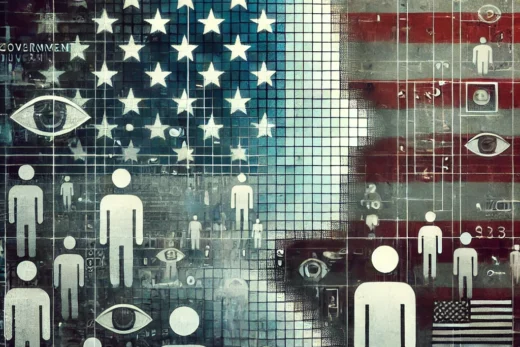
How the Loss of Led to a Mental Health Crisis
The deinstitutionalization movement that began in the mid-20th century in the United States was driven by a well-intentioned desire to shift care for individuals with mental illnesses from large, impersonal psychiatric hospitals to community-based settings. However, this movement, while grounded in humane concerns, has had severe unintended consequences, leading to a widespread mental health crisis. The closure of psychiatric hospitals, coupled with insufficient investment in community mental health resources, has left many individuals with severe mental illnesses without adequate care, resulting in increased homelessness, incarceration, and overall societal strain.
The Historical Context of Deinstitutionalization
Deinstitutionalization was initially fueled by a combination of factors, including the advent of psychotropic medications, civil rights movements advocating for the rights of the mentally ill, and economic pressures to reduce state spending on large institutions. By the 1980s, many psychiatric hospitals had closed, and the responsibility for mental health care was largely transferred to underfunded community mental health centers.
The intent was to create a more humane and effective system where individuals with mental health issues could receive treatment while living within their communities. However, the anticipated community support systems never fully materialized. Many community mental health centers were ill-equipped, both financially and structurally, to handle the influx of patients from psychiatric hospitals. This gap in care led to a significant portion of the mentally ill population ending up on the streets or in jails, where they did not receive the treatment they needed.
Consequences of Deinstitutionalization
The closure of psychiatric hospitals without adequate community-based alternatives has had dire consequences. Many individuals with severe mental illnesses who were once housed in institutions were released into environments that were ill-prepared to meet their needs. The lack of sufficient community mental health resources has resulted in increased homelessness and incarceration among the mentally ill. As noted by NPR, the U.S. now faces a situation where jails and prisons have become the largest providers of mental health care, which is neither appropriate nor effective for treating mental illness.
This trend is starkly evident in the rising number of mentally ill individuals who are homeless or incarcerated. Studies show that approximately 20-25% of the homeless population in the United States suffers from severe mental illness. Furthermore, it is estimated that around 15% of men and 30% of women in jails and prisons have serious mental health conditions.
Comparative Analysis: International Perspectives
Comparing the U.S. experience with other countries can provide additional insight into the consequences of deinstitutionalization. For example, Canada has faced similar challenges, although the scope and impact vary due to differences in healthcare systems and social safety nets. Canada also embraced deinstitutionalization in the latter half of the 20th century, but like the U.S., it struggled with providing sufficient community-based mental health services. This shortfall has contributed to a growing crisis in Canada, with significant numbers of individuals with mental illness ending up homeless or incarcerated.
In contrast, countries like Sweden and Finland, which also underwent deinstitutionalization, have been more successful in establishing robust community-based care systems. These nations have invested heavily in social services, housing support, and integrated mental health care within the community, resulting in better outcomes for individuals with mental illnesses.
Policy Implications and Future Directions
Addressing the mental health crisis in the U.S. requires a multifaceted approach that includes reinvestment in community mental health services, better integration of mental health care with general healthcare services, and policies that prevent the criminalization of mental illness. The mental health system needs to be restructured to ensure that individuals with severe mental illnesses receive the care and support they need in the least restrictive environment possible.
The Affordable Care Act (ACA) has made some strides by expanding access to mental health care, but significant gaps remain. Policymakers must prioritize funding for mental health services, including housing and vocational programs, to address the root causes of homelessness and incarceration among the mentally ill.
Conclusion
The deinstitutionalization movement in the U.S., though well-intentioned, has led to a severe mental health crisis due to the lack of adequate community-based support systems. The rise in homelessness and incarceration among individuals with mental illnesses highlights the need for a comprehensive overhaul of mental health care in the country. By learning from both domestic shortcomings and international successes, the U.S. can develop more effective policies to address this ongoing crisis.
References
- NPR. (2017). How The Loss Of U.S. Psychiatric Hospitals Led To A Mental Health Crisis. Retrieved from NPR.
- Canadian Encyclopedia. (2022). Populism in Canada. Retrieved from Canadian Encyclopedia.
- Clara Hendrickson and William A. Galston. (2022). Why Are Populists Winning Online? Social Media Reinforces Their Anti-Establishment Message. Brookings. Retrieved from Brookings.
- Alavi, M., & Day, S. (2022). Fringe Parties? Canada’s Populist Crisis. Fair Observer. Retrieved from Fair Observer.
- Grindheim, J. E. (2019). Why Right‐Leaning Populism Has Grown in the Most Advanced Liberal Democracies of Europe. The Political Quarterly, 90(4), 757–771. https://doi.org/10.1111/1467-923x.12765.
This article provides a critical examination of the consequences of deinstitutionalization in the United States, drawing on both historical context and comparative analysis to illustrate the ongoing mental health crisis. The analysis is supported by relevant sources to offer a comprehensive understanding of the issue.



